2、kind
Kind
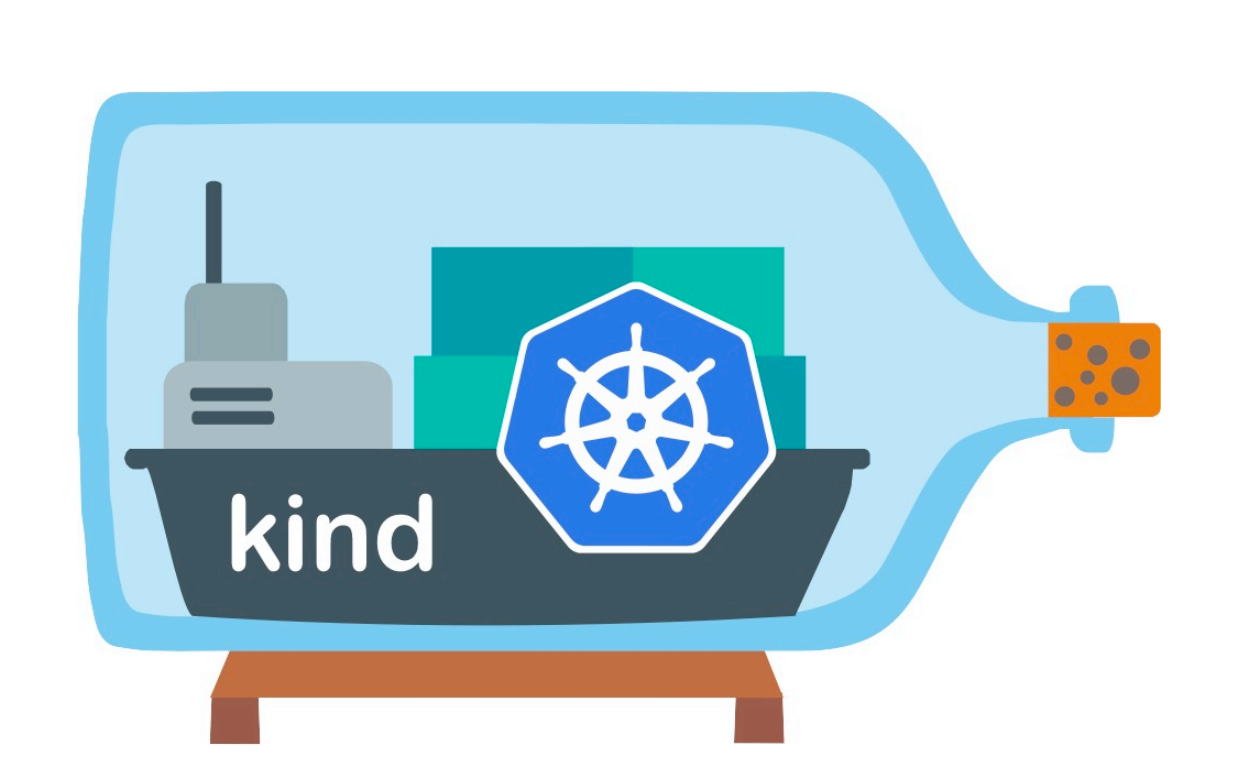
目录
[toc]
前言
Kind 是 Kubernetes in Docker 的简写,是一个使用 Docker 容器作为 Node 节点,在本地创建和运行Kubernetes 集群的工具。适用于在本机创建 Kubernetes 集群环境进行开发和测试。使用 Kind 搭建的集群无法在生产中使用,但是如果你只是想在本地简单的玩玩 K8s,不想占用太多的资源,那么使用 Kind 是你不错的选择。
Kind 内部也是使用 Kubeadm 创建和启动集群节点,并使用 Containerd 作为容器运行时,所以弃用 dockershim对 Kind 没有什么影响。
Kind 的架构图如下所示,它将 Docker 容器作为 Kubernetes 的 Node 节点,并在该 Node 中安装 Kubernetes组件,包括一个或者多个 Control Plane 和一个或者多个 Work Nodes。这就解决了在本机运行多个 Node 的问题,而不需要虚拟化。
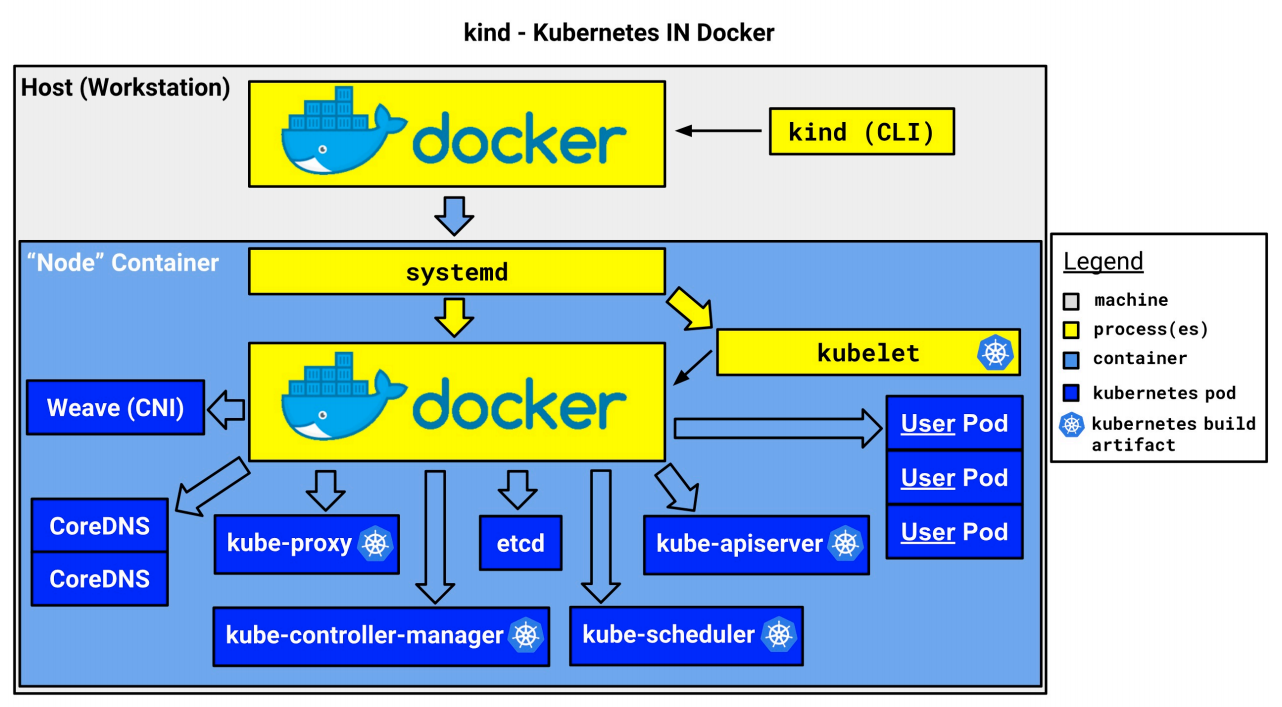
官方网站
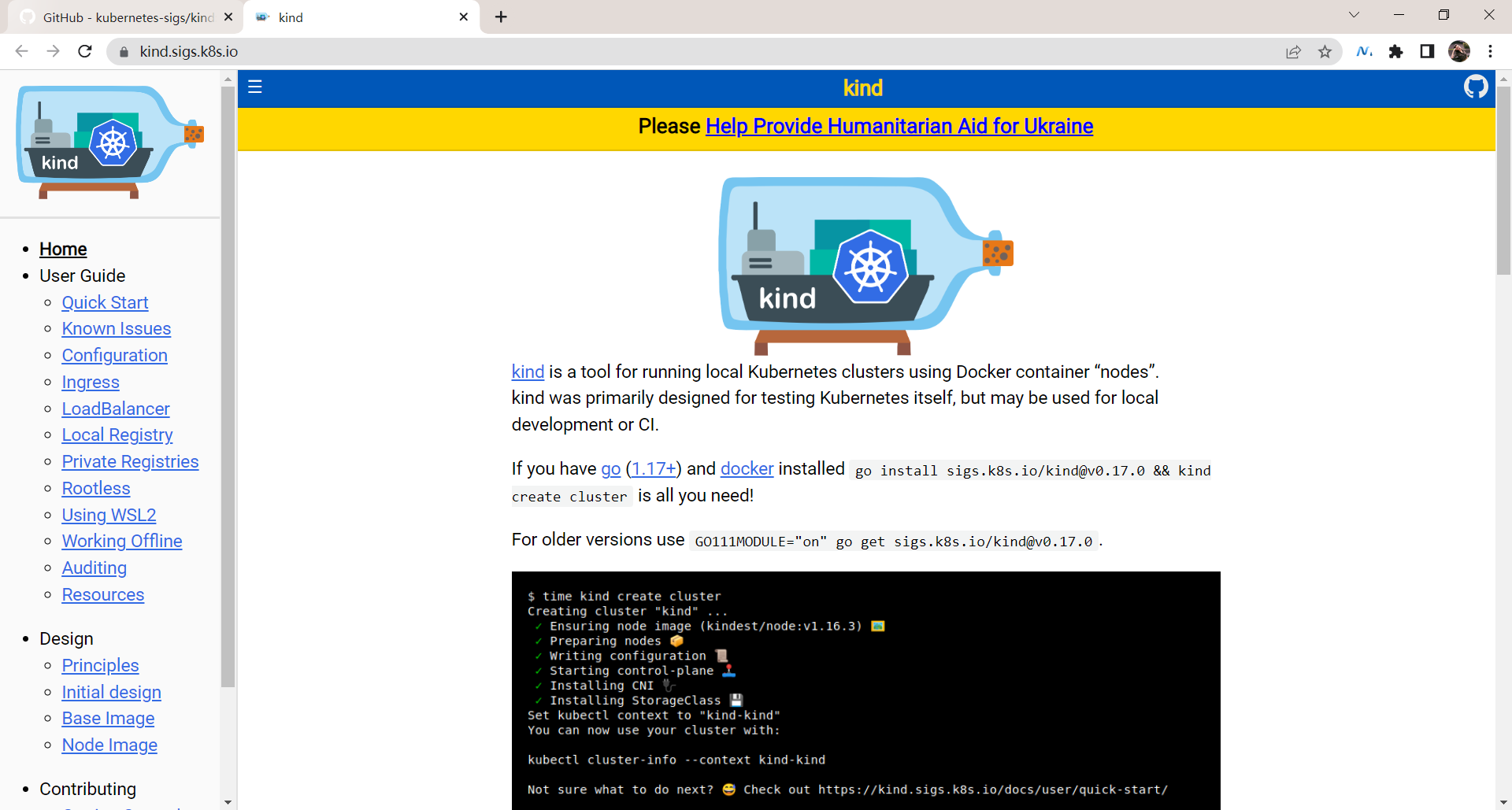
1、安装
见单独md。
2、操作
要了解 Kind 的操作,最简单的方式就是直接执行一条 kind 命令,或者 kind -h,这也是我们了解任何 CLI 工具最基础的方法:
[root@docker ~]#kind -h
kind creates and manages local Kubernetes clusters using Docker container 'nodes'
Usage:
kind [command]
Available Commands:
build Build one of [node-image]
completion Output shell completion code for the specified shell (bash, zsh or fish)
create Creates one of [cluster]
delete Deletes one of [cluster]
export Exports one of [kubeconfig, logs]
get Gets one of [clusters, nodes, kubeconfig]
help Help about any command
load Loads images into nodes
version Prints the kind CLI version
Flags:
-h, --help help for kind
--loglevel string DEPRECATED: see -v instead
-q, --quiet silence all stderr output
-v, --verbosity int32 info log verbosity, higher value produces more output
--version version for kind
Use "kind [command] --help" for more information about a command.
从上面的命令可以看出 kind 工具包含很多可用的命令,比如 build 、create、 delete、load 等等。
其中最重要的应该属于 create 命令了,该命令可以用来创建一个集群,用同样的方式我们可以继续查看 kind create 命令的使用方法:
[root@docker ~]#kind create -h
Creates one of local Kubernetes cluster (cluster)
Usage:
kind create [flags]
kind create [command]
Available Commands:
cluster Creates a local Kubernetes cluster
Flags:
-h, --help help for create
Global Flags:
--loglevel string DEPRECATED: see -v instead
-q, --quiet silence all stderr output
-v, --verbosity int32 info log verbosity, higher value produces more output
Use "kind create [command] --help" for more information about a command.
可以看出只有一个 cluster 子命令可用,但是该子命令后面如何操作呢?
[root@docker ~]#kind create cluster -h
Creates a local Kubernetes cluster using Docker container 'nodes'
Usage:
kind create cluster [flags]
Flags:
--config string path to a kind config file
-h, --help help for cluster
--image string node docker image to use for booting the cluster
--kubeconfig string sets kubeconfig path instead of $KUBECONFIG or $HOME/.kube/config
-n, --name string cluster name, overrides KIND_CLUSTER_NAME, config (default kind)
--retain retain nodes for debugging when cluster creation fails
--wait duration wait for control plane node to be ready (default 0s)
Global Flags:
--loglevel string DEPRECATED: see -v instead
-q, --quiet silence all stderr output
-v, --verbosity int32 info log verbosity, higher value produces more output
创建集群
可以看到 create cluster 后面没有可用的子命令了,但是有一些 Flags 标志可以传递,但其实不传递任何的参数也可以创建一个 K8s 集群,这属于最简单创建 K8s 的方式,只需要执行如下所示的命令即可创建一个默认的集群(目前最新版本只支持到 K8s v1.25.3 版本):
[root@docker ~]#kind create cluster
Creating cluster "kind" ...
✓ Ensuring node image (kindest/node:v1.25.3) 🖼
✓ Preparing nodes 📦
✓ Writing configuration 📜
✓ Starting control-plane 🕹️
✓ Installing CNI 🔌
✓ Installing StorageClass 💾
Set kubectl context to "kind-kind"
You can now use your cluster with:
kubectl cluster-info --context kind-kind
Not sure what to do next? 😅 Check out https://kind.sigs.k8s.io/docs/user/quick-start/
查看集群版本
创建完成后就可以直接使用 kubectl 命令管理该 K8s 集群了:
[root@docker ~]#kubectl get node
NAME STATUS ROLES AGE VERSION
kind-control-plane Ready control-plane 56s v1.25.3
[root@docker ~]#kubectl get po -A
NAMESPACE NAME READY STATUS RESTARTS AGE
kube-system coredns-565d847f94-k2db5 1/1 Running 0 42s
kube-system coredns-565d847f94-v4vhc 1/1 Running 0 42s
kube-system etcd-kind-control-plane 1/1 Running 0 56s
kube-system kindnet-6599x 1/1 Running 0 42s
kube-system kube-apiserver-kind-control-plane 1/1 Running 0 56s
kube-system kube-controller-manager-kind-control-plane 1/1 Running 0 56s
kube-system kube-proxy-gpf4b 1/1 Running 0 42s
kube-system kube-scheduler-kind-control-plane 1/1 Running 0 56s
local-path-storage local-path-provisioner-684f458cdd-wjlwr 1/1 Running 0 42s
#kind create cluster,kind创建集群的时候从,他会自动去配置kubeconfig文件,所以可直接使用kubectl管理kind创建的集群。
#kindnet是kind安装k8s集群是已经默认配置好的cni插件;
创建集群并指定集群名称
默认的集群名称为 kind,在创建的时候我们可以使用参数 --name 指定创建的集群名称,可以创建多个群集:
[root@docker ~]#kind create cluster --name kind-2
Creating cluster "kind-2" ...
✓ Ensuring node image (kindest/node:v1.25.3) 🖼
✓ Preparing nodes 📦
✓ Writing configuration 📜
✓ Starting control-plane 🕹️
✓ Installing CNI 🔌
✓ Installing StorageClass 💾
Set kubectl context to "kind-kind-2"
You can now use your cluster with:
kubectl cluster-info --context kind-kind-2
Not sure what to do next? 😅 Check out https://kind.sigs.k8s.io/docs/user/quick-start/
创建集群并指定启动集群的 Node 镜像
此外还可以指定启动集群的 Node 镜像:
[root@docker ~]#kind create cluster --name kind-3 --image kindest/node:v1.23.4
Creating cluster "kind-3" ...
✓ Ensuring node image (kindest/node:v1.23.4) 🖼
✓ Preparing nodes 📦
✓ Writing configuration 📜
✓ Starting control-plane 🕹️
✓ Installing CNI 🔌
✓ Installing StorageClass 💾
Set kubectl context to "kind-kind-3"
You can now use your cluster with:
kubectl cluster-info --context kind-kind-3
Thanks for using kind! 😊
[root@docker ~]#kubectl get node
NAME STATUS ROLES AGE VERSION
kind-3-control-plane Ready control-plane,master 4m49s v1.23.4
获取集群列表
然后可以使用 kind get clusters 命令来获取集群列表:
[root@docker ~]#kind get clusters
kind
kind-2
切换集群
当有多个集群的时候,我们可以使用 kubectl 来切换要管理的集群:
# 切换到集群 `kind`
[root@docker ~]#kubectl config use-context kind-kind
Switched to context "kind-kind".
# 切换到集群 `kind-2`
[root@docker ~]#kubectl config use-context kind-kind-2
Switched to context "kind-kind-2".
删除集群
要删除集群也非常简单,比如要删除 kind-2 集群:
[root@docker ~]#kind delete cluster --name kind-2
Deleting cluster "kind-2" ...
将本机镜像导入到 Kind 集群
Kind 集群中的 Docker 镜像可以从互联网直接拉取,有时候可能比较缓慢,我们可以将本机镜像导入到 Kind 集群中去,比如使用如下命令可以将镜像导入到 kind-control-plane 节点去:
案例:导入本地镜像到kind的k8s集群里的所有节点上(常用)
#或者导入本地镜像到所有节点上!
#kind get clusters
kind load docker-image k8s.gcr.io/ingress-nginx/controller:v1.2.0 --name devopscluster
#或者导入本地镜像到某个节点上!
kind load docker-image nginx:mainline-alpine --nodes kind-control-plane
测试过程:
#测试过程:
1、宿主机拉取测试镜像
[root@docker ~]#docker images
REPOSITORY TAG IMAGE ID CREATED SIZE
kindest/node <none> d8644f660df0 5 weeks ago 898MB
kindest/node v1.23.4 6b76f7b7813a 9 months ago 1.47GB
[root@docker ~]#docker pull nginx:mainline-alpine
mainline-alpine: Pulling from library/nginx
59bf1c3509f3: Pull complete
f3322597df46: Pull complete
d09cf91cabdc: Pull complete
3a97535ac2ef: Pull complete
919ade35f869: Pull complete
40e5d2fe5bcd: Pull complete
Digest: sha256:eb05700fe7baa6890b74278e39b66b2ed1326831f9ec3ed4bdc6361a4ac2f333
Status: Downloaded newer image for nginx:mainline-alpine
docker.io/library/nginx:mainline-alpine
[root@docker ~]#docker images
REPOSITORY TAG IMAGE ID CREATED SIZE
kindest/node <none> d8644f660df0 5 weeks ago 898MB
kindest/node v1.23.4 6b76f7b7813a 9 months ago 1.47GB
nginx mainline-alpine cc44224bfe20 11 months ago 23.5MB
2、进入到kind节点(容器)
[root@docker ~]#kubectl get node
NAME STATUS ROLES AGE VERSION
kind-control-plane Ready control-plane 26m v1.25.3
[root@docker ~]#docker ps
CONTAINER ID IMAGE COMMAND CREATED STATUS PORTS NAMES
24c2e3b39d3b kindest/node:v1.25.3 "/usr/local/bin/entr…" 27 minutes ago Up 26 minutes 127.0.0.1:46202->6443/tcp kind-control-plane
[root@docker ~]#docker exec -it kind-control-plane /bin/sh
# ctr -n k8s.io i ls -q
docker.io/kindest/kindnetd:v20221004-44d545d1
docker.io/kindest/local-path-helper:v20220607-9a4d8d2a
docker.io/kindest/local-path-provisioner:v0.0.22-kind.0
import-2022-10-25@sha256:0dae4b69c2aa90e6c24691ebbe2e860e2a1ae68463a622c627fb58110153d950
import-2022-10-25@sha256:1c35781a4b6011d5c27bedbba7ca130db72c4aaf74d108c60bc77ae49130e5e4
import-2022-10-25@sha256:4002c19dafb94b1995fc598fae590f70cac10135f61ca2551bd97aae37ed9c4a
import-2022-10-25@sha256:409b0e81d9aecf59df96df445a3171f43e2ae834ef6c9e77b1492c4d19bfd78d
registry.k8s.io/coredns/coredns:v1.9.3
registry.k8s.io/etcd:3.5.4-0
registry.k8s.io/kube-apiserver:v1.25.3
registry.k8s.io/kube-controller-manager:v1.25.3
registry.k8s.io/kube-proxy:v1.25.3
registry.k8s.io/kube-scheduler:v1.25.3
registry.k8s.io/pause:3.7
sha256:221177c6082a88ea4f6240ab2450d540955ac6f4d5454f0e15751b653ebda165
sha256:4bc1b1e750e34e3fbb542febefe990232575c949ccc07836125e23f3b1881a56
sha256:4c1e997385b8fb4ad4d1d3c7e5af7ff3f882e94d07cf5b78de9e889bc60830e6
sha256:5185b96f0becf59032b8e3646e99f84d9655dff3ac9e2605e0dc77f9c441ae4a
sha256:5225724a11400a83db6efe486e37aeaec871f0e15b19e82c9160b7c3de880875
sha256:580dca99efc3bb79350e610acca6242f13442633087f3187f7264adbddfbda07
sha256:86063cd68dfc91a931a6e095a0f796643990ce18d7edf0bbc3385c85bc95c1ab
sha256:a8a176a5d5d698f9409dc246f81fa69d37d4a2f4132ba5e62e72a78476b27f66
sha256:d2f902e939cc38784e56ec30c102ef01a019e13a3b31d4c23332ffdd0244a632
sha256:d6e3e26021b60c625f0ef5b2dd3f9e22d2d398e05bccc4fdd7d59fbbb6a04d3f
# ctr -n k8s.io i ls -q|grep nginx
#
3、导入镜像
[root@docker ~]# kind load docker-image --nodes kind-control-plane nginx:mainline-alpine
Image: "" with ID "sha256:cc44224bfe208a46fbc45471e8f9416f66b75d6307573e29634e7f42e27a9268" not yet present on node "kind-control-plane", loading...
4、验证
# ctr -n k8s.io i ls -q|grep nginx
docker.io/library/nginx:mainline-alpine
3、配置集群
配置3节点集群
上面我们介绍的是 kind 命令的一些常用操作,此外我们还可以通过一个文件来配置要创建的 K8s 集群,比如定义一个如下所示的 config.yaml 文件:
[root@docker ~]#vim config.yaml
# config.yaml
kind: Cluster
apiVersion: kind.x-k8s.io/v1alpha4
name: demo
nodes:
- role: control-plane
- role: worker
- role: worker
该配置文件表示我们一共要创建 3 个节点,一个控制节点,两个工作节点,在创建集群的时候只需要通过 --config 参数指定该文件即可:
[root@docker ~]#kind create cluster --config config.yaml
Creating cluster "demo" ...
✓ Ensuring node image (kindest/node:v1.25.3) 🖼
✓ Preparing nodes 📦 📦 📦
✓ Writing configuration 📜
✓ Starting control-plane 🕹️
✓ Installing CNI 🔌
✓ Installing StorageClass 💾
✓ Joining worker nodes 🚜
Set kubectl context to "kind-demo"
You can now use your cluster with:
kubectl cluster-info --context kind-demo
Not sure what to do next? 😅 Check out https://kind.sigs.k8s.io/docs/user/quick-start/
创建后的集群名称为 demo ,一共包括 3 个节点:
[root@docker ~]#kubectl get node
NAME STATUS ROLES AGE VERSION
demo-control-plane Ready control-plane 74s v1.25.3
demo-worker Ready <none> 34s v1.25.3
demo-worker2 Ready <none> 34s v1.25.3
[root@docker ~]#kubectl get po -A
NAMESPACE NAME READY STATUS RESTARTS AGE
kube-system coredns-565d847f94-8snf4 1/1 Running 0 62s
kube-system coredns-565d847f94-dwdn6 1/1 Running 0 62s
kube-system etcd-demo-control-plane 1/1 Running 0 76s
kube-system kindnet-jjj7l 1/1 Running 0 63s
kube-system kindnet-l69rg 1/1 Running 0 37s
kube-system kindnet-sljw7 1/1 Running 0 34s
kube-system kube-apiserver-demo-control-plane 1/1 Running 0 74s
kube-system kube-controller-manager-demo-control-plane 1/1 Running 0 77s
kube-system kube-proxy-2rlsr 1/1 Running 0 63s
kube-system kube-proxy-s8cmz 1/1 Running 0 34s
kube-system kube-proxy-sdskq 1/1 Running 0 37s
kube-system kube-scheduler-demo-control-plane 1/1 Running 0 74s
local-path-storage local-path-provisioner-684f458cdd-x97z8 1/1 Running 0 62s
创建一个 HA 模式的控制平面的k8s集群
如果想创建一个 HA 模式的控制平面,那么我们可以定义如下所示的配置文件,只需要指定 3 个(奇数个) control-plane 角色的节点即可:
kind: Cluster
apiVersion: kind.x-k8s.io/v1alpha4
nodes:
- role: control-plane
- role: control-plane
- role: control-plane
- role: worker
- role: worker
- role: worker
# 注意:这里是的HA是用ha-proxy来实现的。
还可以将 Node 的端口映射到宿主机
此外我们还可以将 Node 的端口映射到宿主机,通过配置文件中的 extraPortMappings 属性可以实现该功能,如下所示配置可以将 control-plane 节点 80 端口映射到宿主机的 80 端口上:
kind: Cluster
apiVersion: kind.x-k8s.io/v1alpha4
nodes:
- role: control-plane
extraPortMappings:
- containerPort: 80
hostPort: 80
listenAddress: "0.0.0.0" # Optional, defaults to "0.0.0.0"
protocol: udp # Optional, defaults to tcp

如果要将端口映射与 NodePort 一起使用,kind 节点的 containerPort 和 Service 的 nodePort 需要相等。
kind: Cluster
apiVersion: kind.x-k8s.io/v1alpha4
nodes:
- role: control-plane
extraPortMappings:
- containerPort: 30950
hostPort: 80

然后将 nodePort 设置为 30950。
kind: Pod
apiVersion: v1
metadata:
name: foo
labels:
app: foo
spec:
containers:
- name: foo
image: hashicorp/http-echo:0.2.3
args:
- "-text=foo"
ports:
- containerPort: 5678
""+
apiVersion: v1
kind: Service
metadata:
name: foo
spec:
type: NodePort
ports:
- name: http
nodePort: 30950
port: 5678
selector:
app: foo

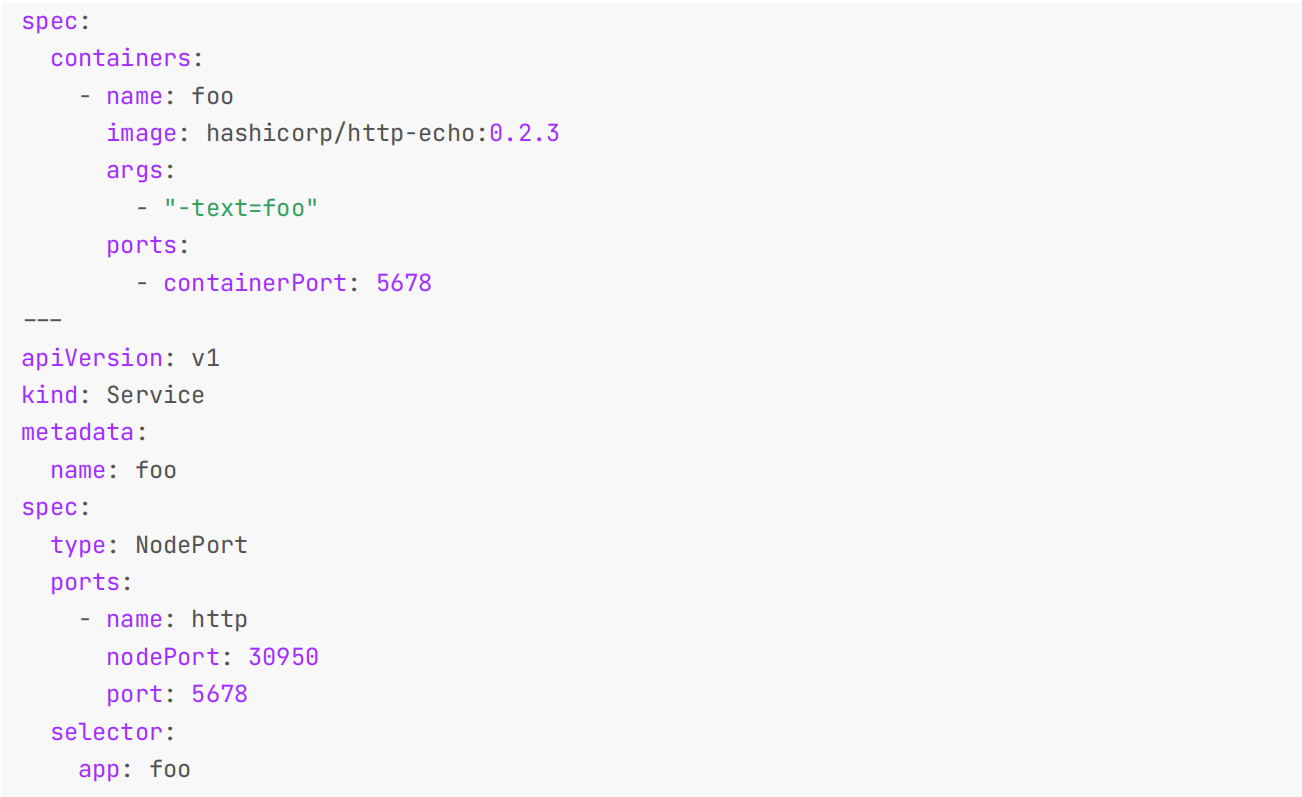
指定k8s镜像
同样我们也可以在配置文件中指定 Node 的容器镜像版本运行指定版本的 Kubernetes 群集。可以在官方 release 页面中中查找需要镜像 tag,带上 sha256 shasum(非必须),例如:
kind: Cluster
apiVersion: kind.x-k8s.io/v1alpha4
nodes:
- role: control-plane
image:
kindest/node:v1.18.15@sha256:5c1b980c4d0e0e8e7eb9f36f7df525d079a96169c8a8f20d8bd108c0d08
89cc4
- role: worker
image:
kindest/node:v1.18.15@sha256:5c1b980c4d0e0e8e7eb9f36f7df525d079a96169c8a8f20d8bd108c0d08
89cc4
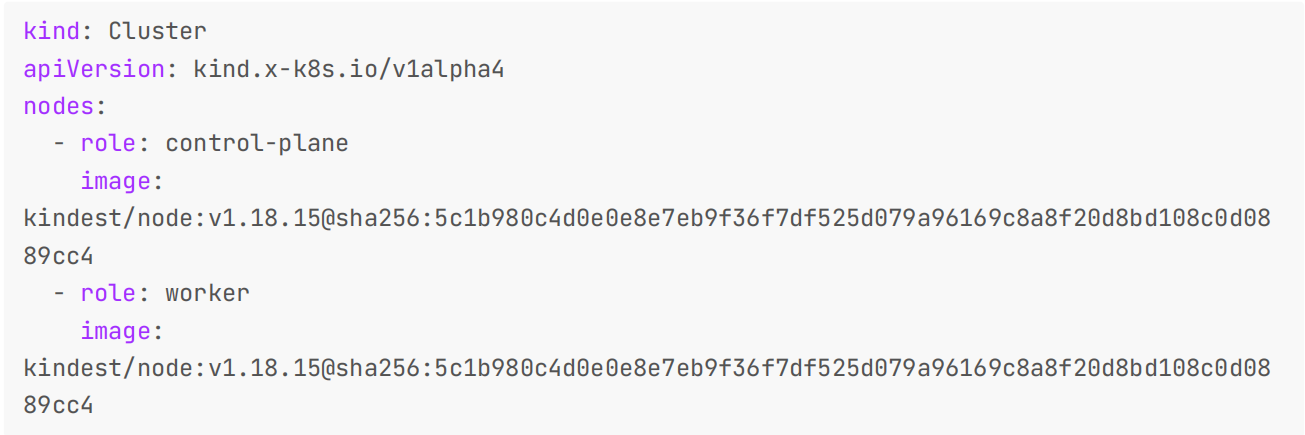
此外还有一些其他定制操作,比如 Kind 创建的集群默认自带一个轻量级的 CNI 插件 kindnetd ,我们也可以禁用默认设置来安装其他 CNI,比如 Calico。
kind: Cluster
apiVersion: kind.x-k8s.io/v1alpha4
networking:
# the default CNI will not be installed
disableDefaultCNI: true

还可以在 iptables 和 ipvs 之间配置将要使用的 kube-proxy 模式,默认情况下使用 iptables :
kind: Cluster
apiVersion: kind.x-k8s.io/v1alpha4
networking:
kubeProxyMode: "ipvs"

另外我们可以讲宿主机的路径挂载到某个节点上用于数据持久化等。
kind: Cluster
apiVersion: kind.x-k8s.io/v1alpha4
nodes:
- role: control-plane
# add a mount from /path/to/my/files on the host to /files on the node
extraMounts:
- hostPath: /path/to/my/files
containerPath: /files

我们还可以给节点定制不同的标签,这对于节点筛选非常有用,只需要在节点中添加 labels 配置即可。
kind: Cluster
apiVersion: kind.x-k8s.io/v1alpha4
nodes:
- role: control-plane
- role: worker
extraPortMappings:
- containerPort: 30950
hostPort: 80
labels:
tier: frontend
- role: worker
labels:
tier: backend
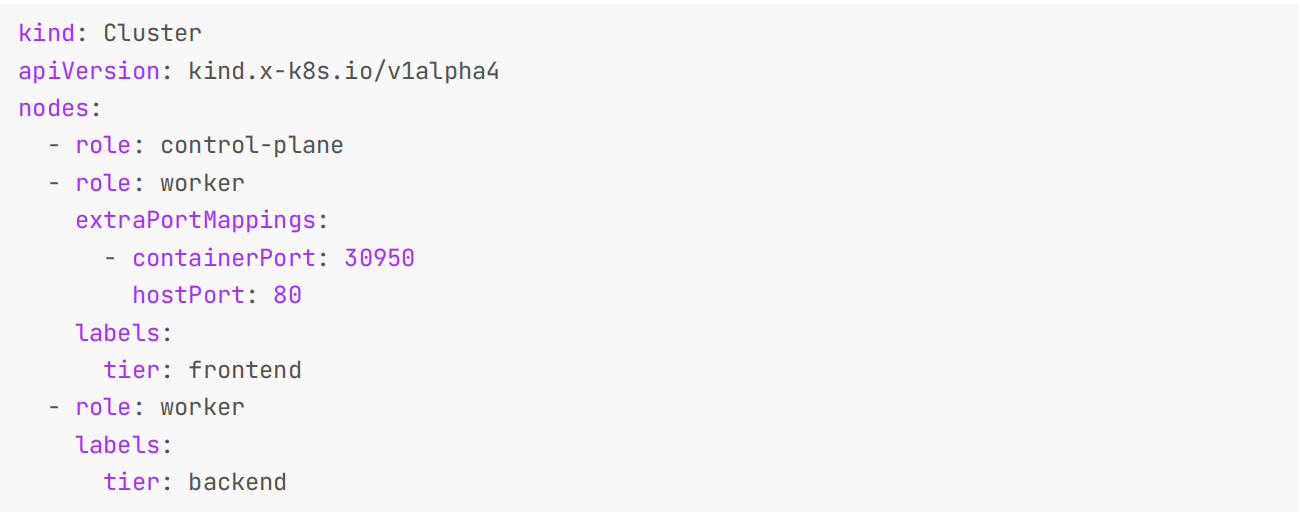
Kind 使用 Kubeadm 来配置的集群节点,他会在第一个控制平面节点上运行 kubeadm init 命令,我们可以使用kubeadm InitConfiguration 来进行一些定制。
kind: Cluster
apiVersion: kind.x-k8s.io/v1alpha4
nodes:
- role: control-plane
kubeadmConfigPatches:
- |
kind: InitConfiguration
nodeRegistration:
kubeletExtraArgs:
node-labels: "my-label=true"

如果你想进行更多的定制,那么在 kubeadm init 期间有四种配置类型可用: InitConfiguration 、ClusterConfiguration 、 KubeProxyConfiguration、 KubeletConfiguration。例如,我们可以使用kubeadm ClusterConfiguration 来覆盖 apiserver 标志:
kind: Cluster
apiVersion: kind.x-k8s.io/v1alpha4
nodes:
- role: control-plane
kubeadmConfigPatches:
- |
kind: ClusterConfiguration
apiServer:
extraArgs:
enable-admission-plugins:
NodeRestriction,MutatingAdmissionWebhook,ValidatingAdmissionWebhook

在 Kind 集群中的 worker 或控制平面(在 HA 模式下)节点上,Kind 会执行 kubeadm join 命令,我们也可以使用JoinConfiguration (spec) 来进行定制:
kind: Cluster
apiVersion: kind.x-k8s.io/v1alpha4
nodes:
- role: control-plane
- role: worker
- role: worker
kubeadmConfigPatches:
- |
kind: JoinConfiguration
nodeRegistration:
kubeletExtraArgs:
node-labels: "my-label2=true"
- role: control-plane
kubeadmConfigPatches:
- |
kind: JoinConfiguration
nodeRegistration:
kubeletExtraArgs:
node-labels: "my-label3=true"
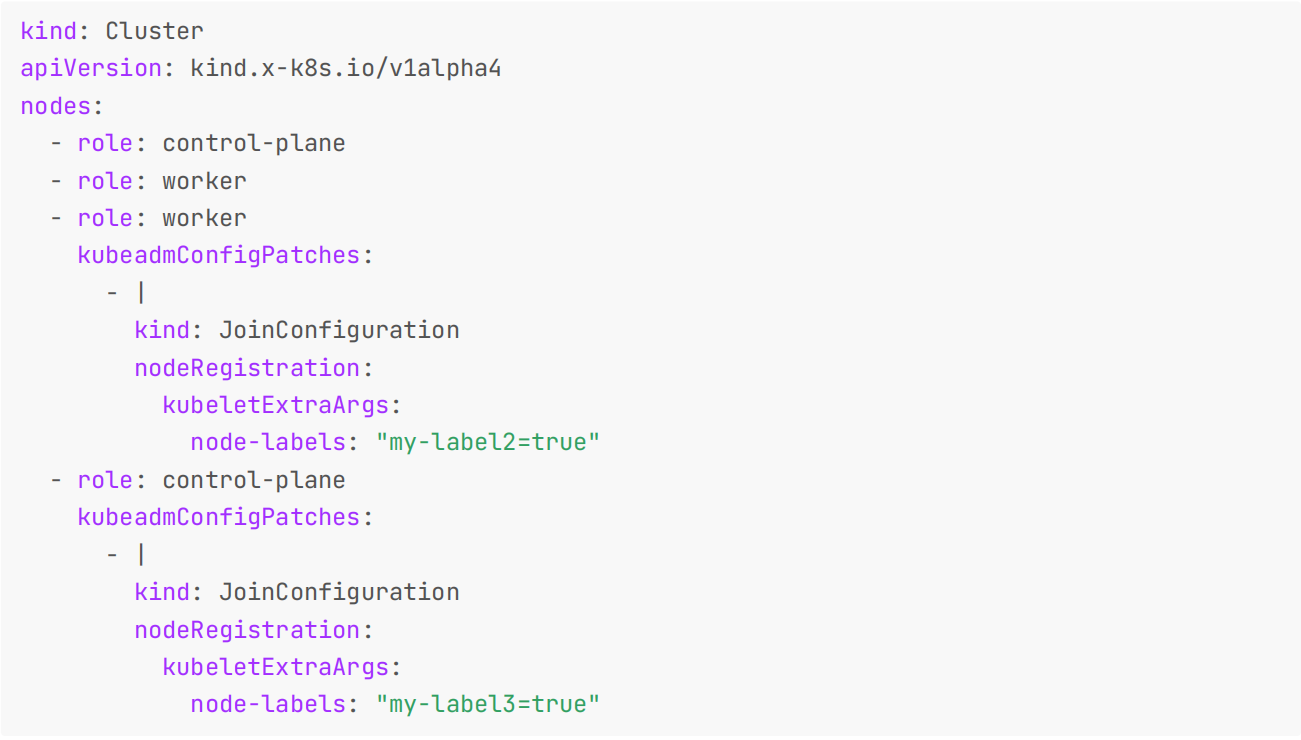
此外 Kind 还有很多其他的实践方式,在后续课程中我们也会慢慢接触到。
FAQ
- Kind 搭建的集群会自动提供一个 local-path-provisioner 组件,该组件会自动生成 PV。
[root@docker ~]#kubectl get node
NAME STATUS ROLES AGE VERSION
demo-control-plane Ready control-plane 12d v1.25.3
demo-worker Ready <none> 12d v1.25.3
demo-worker2 Ready <none> 12d v1.25.3
[root@docker ~]#kind get clusters
demo
kind
[root@docker ~]#kubectl get sc
NAME PROVISIONER RECLAIMPOLICY VOLUMEBINDINGMODE ALLOWVOLUMEEXPANSION AGE
standard (default) rancher.io/local-path Delete WaitForFirstConsumer false 12d
[root@docker ~]#kubectl get po -nlocal-path-storage
NAME READY STATUS RESTARTS AGE
local-path-provisioner-684f458cdd-x97z8 1/1 Running 0 12d
关于我
我的博客主旨:
- 排版美观,语言精炼;
- 文档即手册,步骤明细,拒绝埋坑,提供源码;
- 本人实战文档都是亲测成功的,各位小伙伴在实际操作过程中如有什么疑问,可随时联系本人帮您解决问题,让我们一起进步!
🍀 微信二维码
x2675263825 (舍得), qq:2675263825。

🍀 微信公众号
《云原生架构师实战》

🍀 语雀
https://www.yuque.com/xyy-onlyone
https://www.yuque.com/xyy-onlyone/exkgza?# 《语雀博客》
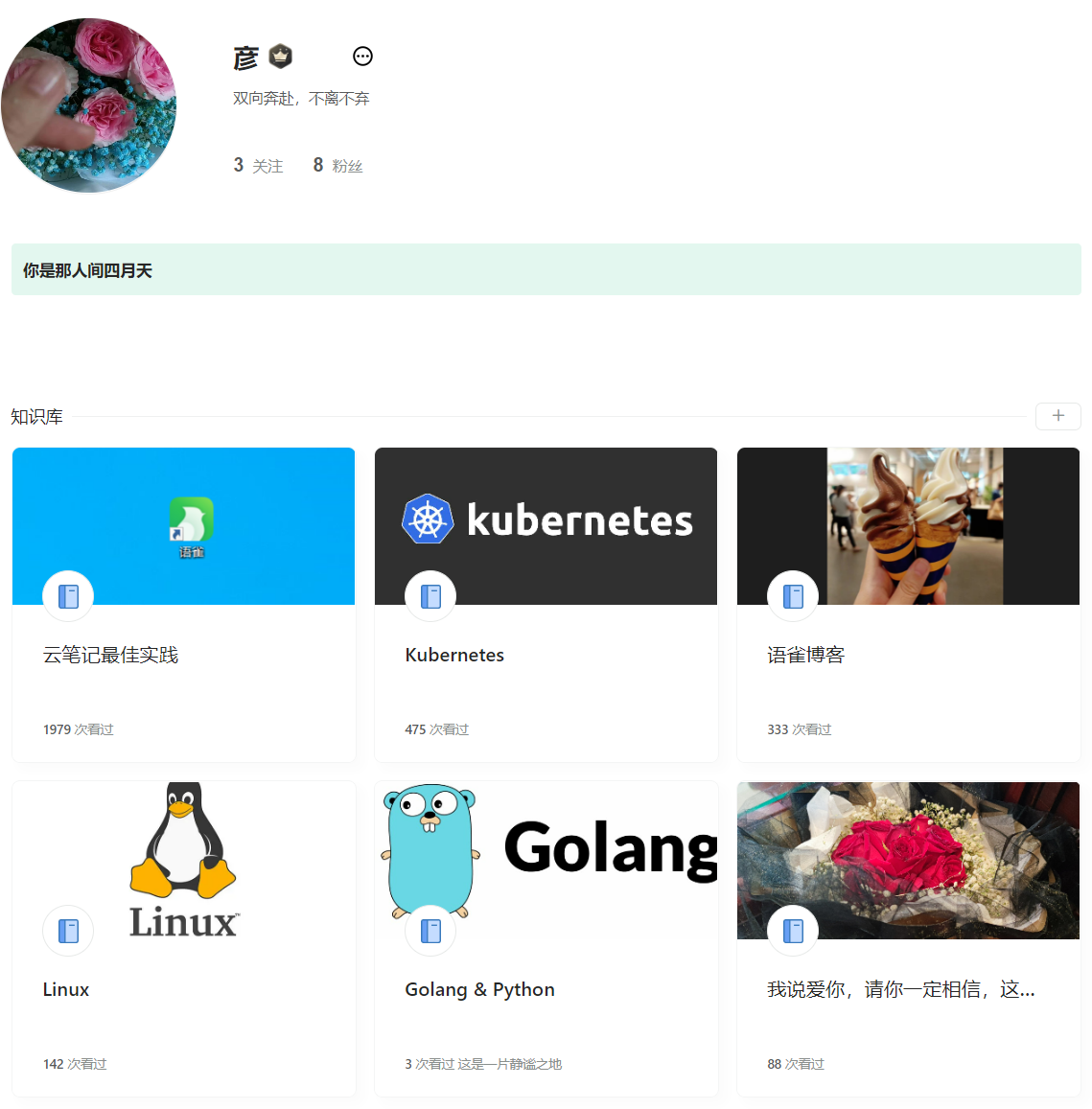
🍀 博客
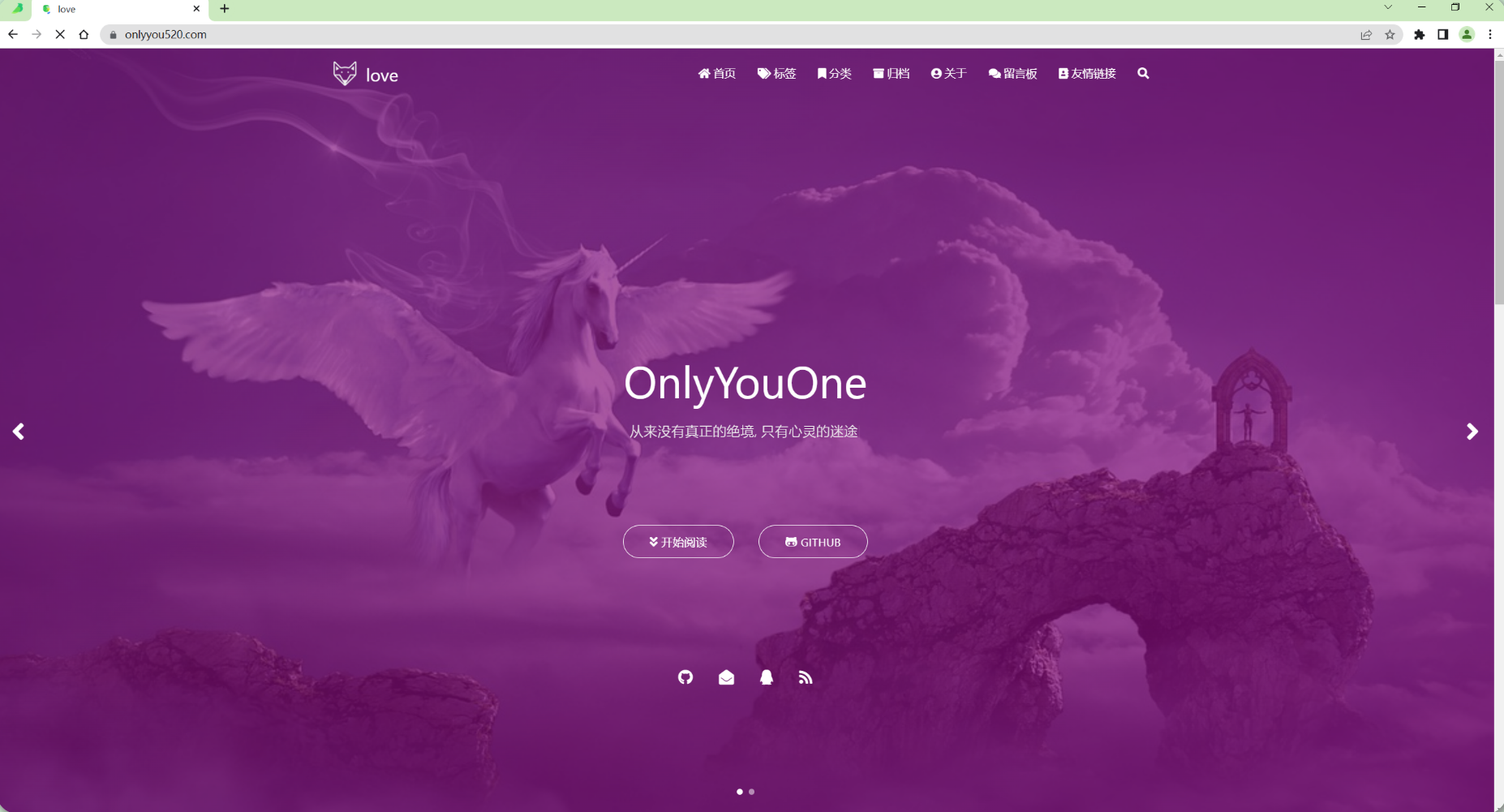
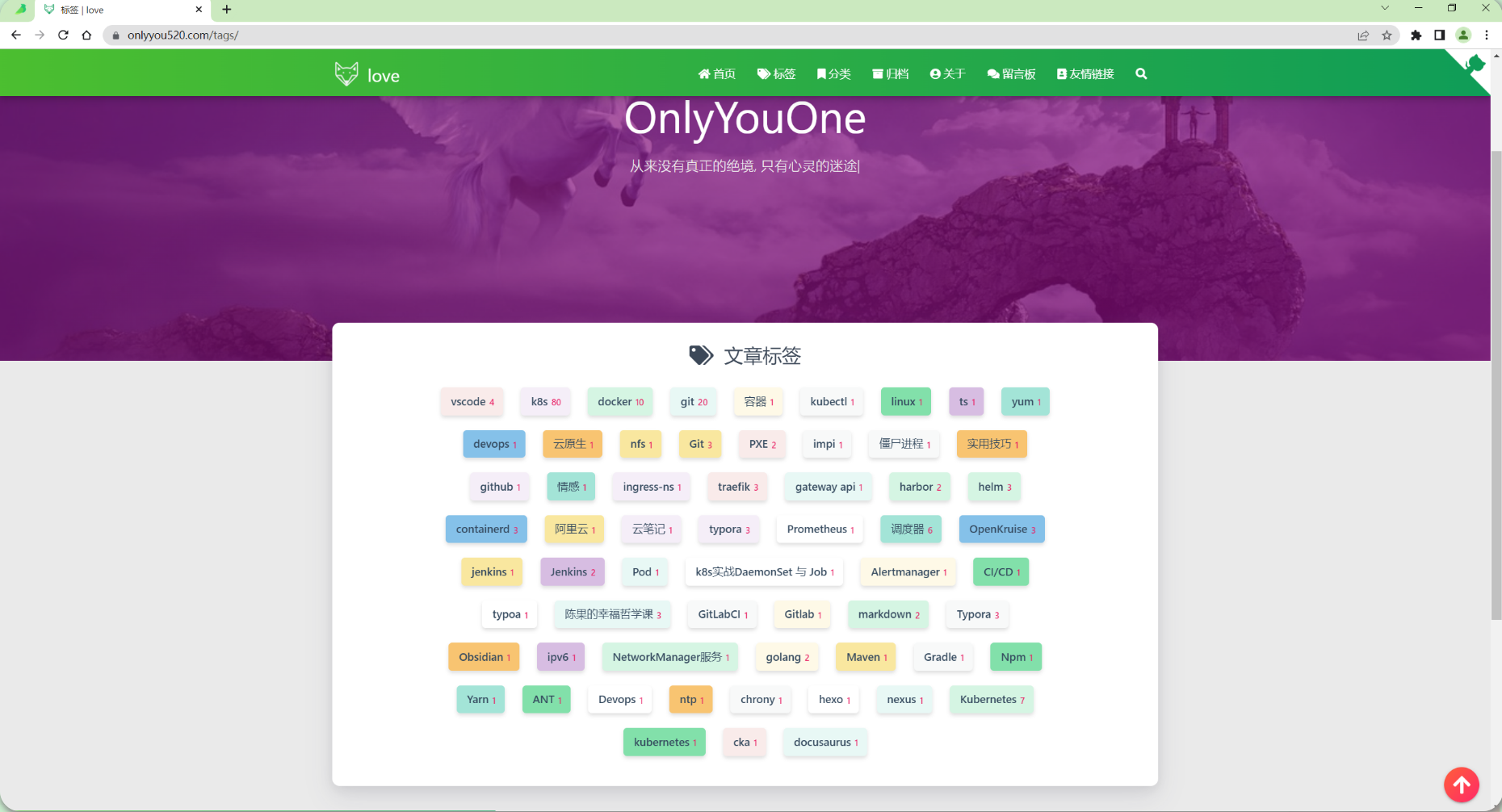
🍀 csdn
https://blog.csdn.net/weixin_39246554?spm=1010.2135.3001.5421

🍀 知乎
https://www.zhihu.com/people/foryouone
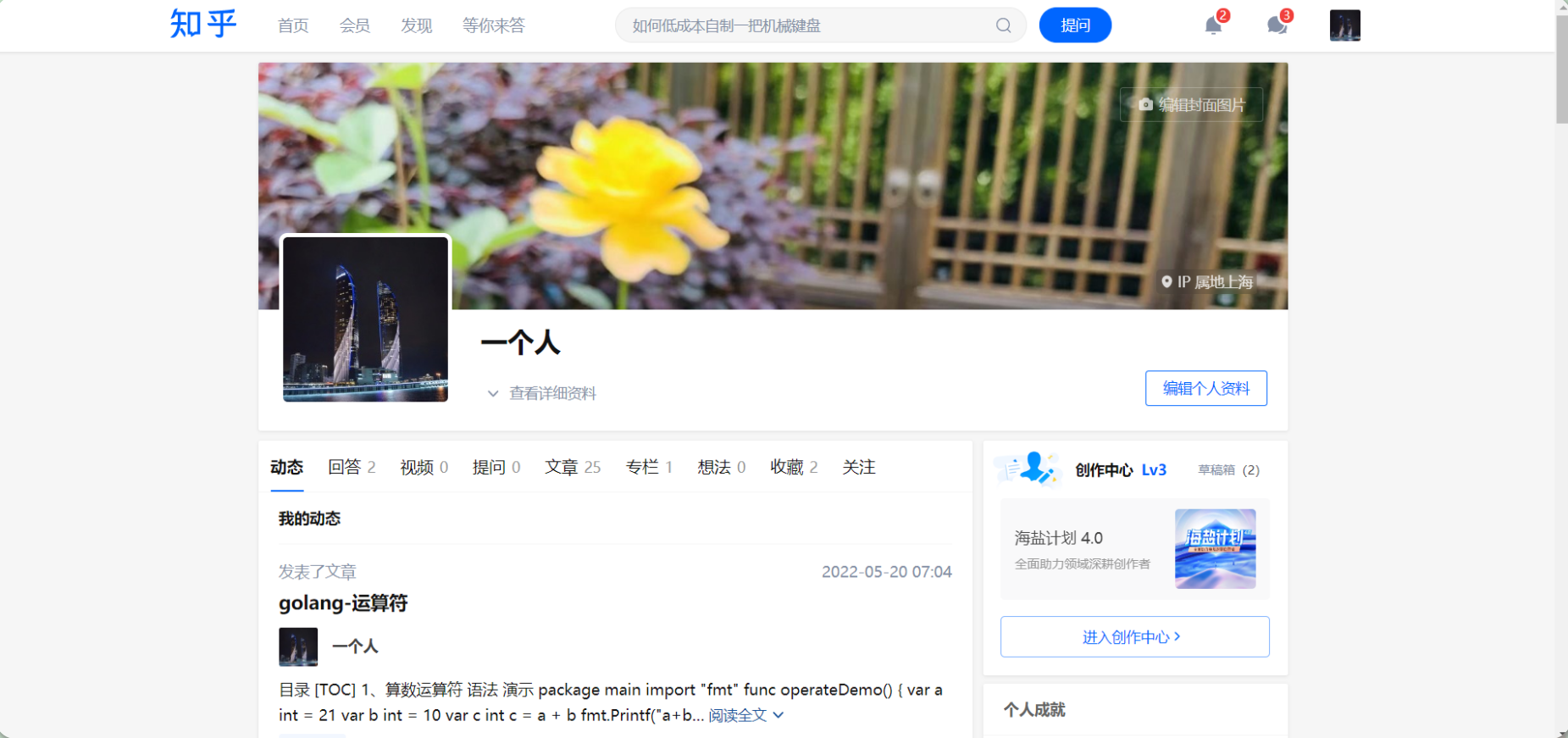
最后
好了,关于本次就到这里了,感谢大家阅读,最后祝大家生活快乐,每天都过的有意义哦,我们下期见!
